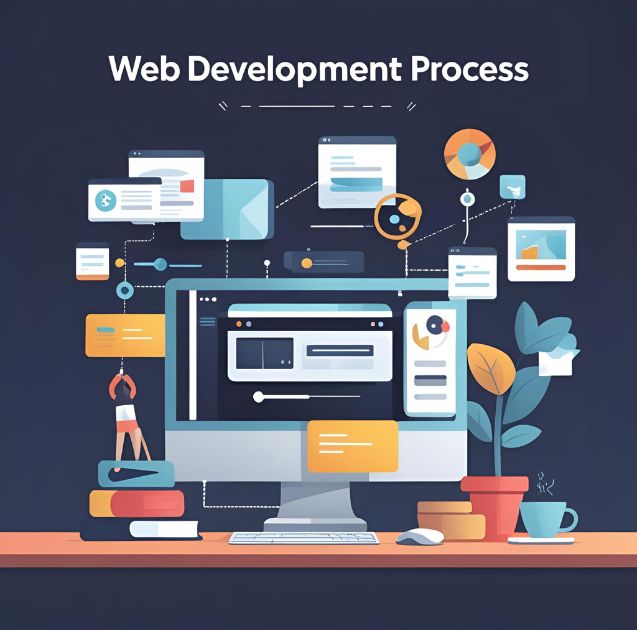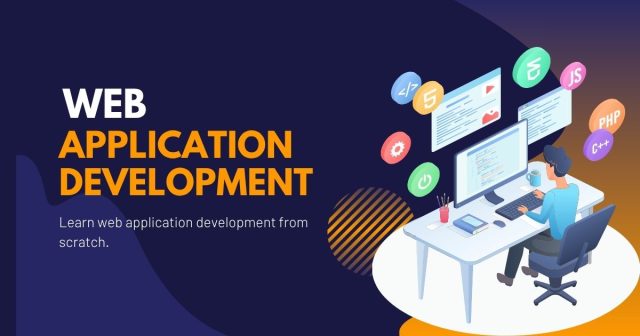Building web applications has become one of the most sought-after skills in tech. From social media platforms to e-commerce sites, web apps power the digital experiences we use every day. But what exactly goes into creating these applications, and how can you get started?
Web application development is the process of creating software applications that run on web servers and are accessed through web browsers. Unlike traditional desktop applications that require installation, web apps are accessible from any device with an internet connection and a browser.
Whether you’re looking to launch your first web project or considering a career in web development, this guide will walk you through everything you need to know about building modern web applications.
What Makes Web Applications Different

Web applications differ significantly from traditional websites and desktop software. While a static website simply displays information, web applications are interactive platforms that allow users to input data, perform tasks, and receive personalized experiences.
Consider the difference between a company’s informational website and Gmail. The website shows content but doesn’t change based on user interaction. Gmail, however, lets you compose emails, organize folders, search messages, and sync across devices—all hallmarks of a web application.
Web apps also stand apart from desktop applications because they don’t require installation or updates on individual devices. Users access them through browsers, making them platform-independent and easier to maintain.
Core Technologies in Web Development
Frontend Technologies
The frontend is what users see and interact with directly. Modern web development relies on three fundamental technologies:
HTML (HyperText Markup Language) provides the structure and content of web pages. Think of it as the skeleton that organizes text, images, and other elements on the page.
CSS (Cascading Style Sheets) handles the visual presentation, controlling colors, layouts, fonts, and responsive design. CSS transforms basic HTML into visually appealing interfaces.
JavaScript adds interactivity and dynamic behavior. From form validation to real-time updates, JavaScript makes web pages respond to user actions without requiring page refreshes.
Popular frontend frameworks like React, Vue.js, and Angular build upon these core technologies to streamline development and create more sophisticated user interfaces.
Backend Technologies
The backend powers everything users don’t see—databases, server logic, authentication, and data processing. Backend developers work with various programming languages and frameworks:
Python with frameworks like Django and Flask offers clean syntax and extensive libraries, making it popular for rapid development.
JavaScript can also run on servers through Node.js, allowing developers to use the same language for both frontend and backend development.
Java, C#, Ruby, and PHP each bring their own strengths to web development, with established frameworks and large developer communities.
Databases and Storage
Web applications need to store and retrieve data efficiently. Developers choose between different types of databases based on their application’s needs:
Relational databases like MySQL and PostgreSQL use structured tables and are ideal for applications requiring complex relationships between data.
NoSQL databases like MongoDB offer more flexibility for applications handling varied data types or requiring rapid scaling.
The Web Development Process

Planning and Requirements
Successful web applications start with thorough planning. This phase involves understanding user needs, defining features, and creating wireframes or mockups. Developers must consider the target audience, technical requirements, and scalability needs before writing any code.
Design and User Experience
User interface (UI) and user experience (UX) design shape how people interact with your application. Good design principles include intuitive navigation, responsive layouts that work on all devices, and accessibility features for users with disabilities.
Development and Testing
The development phase typically follows an iterative approach, building features incrementally and testing them regularly. Modern web development emphasizes automated testing, code reviews, and continuous integration to maintain code quality.
Deployment and Maintenance
Launching a web application involves configuring servers, setting up domains, and ensuring security measures are in place. Popular deployment platforms like Heroku, Vercel, and AWS simplify this process for developers.
Ongoing maintenance includes monitoring performance, fixing bugs, updating security patches, and adding new features based on user feedback.
Essential Tools and Frameworks
Development Environments
Code editors like Visual Studio Code, Sublime Text, and Atom provide syntax highlighting, debugging tools, and extensions that speed up development.
Version control systems, particularly Git, help developers track changes, collaborate with teams, and manage different versions of their code.
Frontend Frameworks
React dominates the frontend landscape with its component-based architecture and large ecosystem of libraries.
Vue.js offers a gentler learning curve while still providing powerful features for building interactive interfaces.
Angular provides a comprehensive framework with built-in tools for routing, forms, and HTTP requests.
Backend Frameworks
Express.js for Node.js enables rapid API development with minimal setup.
Django for Python includes built-in features like user authentication, admin panels, and database management.
Spring Boot for Java provides enterprise-grade tools for building robust web applications.
Current Trends Shaping Web Development
Progressive Web Apps (PWAs)
PWAs combine the best features of web and mobile applications. They work offline, send push notifications, and can be installed on devices like native apps while still being accessible through browsers.
API-First Development
Modern applications increasingly rely on APIs (Application Programming Interfaces) to connect different services and enable data sharing between applications. RESTful APIs and GraphQL have become standard approaches for building scalable web services.
Cloud Services and Serverless Architecture
Cloud platforms like AWS, Google Cloud, and Microsoft Azure offer services that eliminate the need for developers to manage servers directly. Serverless functions allow code to run only when needed, reducing costs and complexity.
AI and Machine Learning Integration
Web applications now commonly integrate AI features like chatbots, recommendation engines, and image recognition through APIs and cloud services.
Getting Started with Your First Web Application
Choose Your Learning Path
Begin with HTML, CSS, and JavaScript fundamentals before moving to frameworks. Free resources like MDN Web Docs, freeCodeCamp, and The Odin Project provide structured learning paths.
Start with Simple Projects
Build a personal portfolio website, a to-do list application, or a simple blog. These projects teach core concepts while creating something you can showcase.
Learn Version Control
Set up a GitHub account and learn basic Git commands. Version control is essential for any serious development work and helps you contribute to open-source projects.
Practice Responsive Design
Ensure your applications work well on mobile devices, tablets, and desktops. Mobile-first design has become standard practice as mobile usage continues to grow.
Building Your Development Skills
Successful web developers combine technical skills with problem-solving abilities and continuous learning. The field evolves rapidly, with new frameworks, tools, and best practices emerging regularly.
Focus on understanding core principles rather than memorizing specific syntax. Languages and frameworks change, but concepts like data structures, algorithms, and software architecture remain valuable throughout your career.
Join developer communities, contribute to open-source projects, and build a portfolio showcasing your best work. These activities help you learn from others while demonstrating your skills to potential employers or clients.
Web application development offers exciting opportunities to create digital solutions that can reach millions of users. Start with the fundamentals, build projects that interest you, and gradually expand your skills as you gain experience. The journey requires patience and practice, but the ability to bring ideas to life through code makes it incredibly rewarding.







